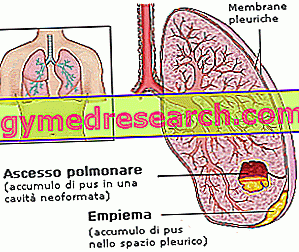Watch the video X Watch the video on youtube What is aerosol therapy? Aerosol therapy is a drug delivery technique, used primarily for the treatment or prevention of colds, inflammation and airway infections. Aerosol therapy requires a device that reduces therapeutic substances in microscopic corpuscles, which can more easily reach the mucous membranes of the nose, larynx, trachea, bronchi and lungs
Category respiratory health
Introduction Calming the cough is what patients ask the doctor as soon as this annoying disorder appears. Cough is a defense mechanism adopted by the body in an attempt to remove and remove any irritants and / or pathogens found inside the airways. Cough, therefore, is not a disease, but a symptom that can be encountered in more than 100 different diseases
Generality Throat phlegm - also known as retronasal catarrh - is the consequence of excessive mucus production by the secreting glands present in the upper airways. More precisely, the phlegm represents what is defined as a pathological secretion of the aforementioned glands, caused by factors having different origins and nature (cooling illnesses, allergic diseases, etc
Anti-snoring plasters Nasal plasters are medical devices used mainly to improve the quality of sleep in patients who tend to breathe through the mouth (rather than from the nose) and in those suffering from nasal congestion due to allergies or flu. An excellent remedy against snoring, the nasal plasters were born to interrupt that vicious circle of oral breathing (therefore of roncopatie) during night rest
Key points Nasal congestion (or a stuffy nose) is a recurrent symptom in many pathologies affecting the respiratory tract. It is characterized by the accumulation of mucus in the nasal cavity and by the inflammation of the respiratory mucosa. Nasal congestion: causes Nasal congestion may depend on several conditions: allergies, deviation of the nasal septum, hay fever, pregnancy, viral infections of the respiratory tract, enlargement of the adenoids, nasal polyposis, colds, gastric reflux, sinusitis and administration of some drugs
Generality Scab formation in the nose is a rather annoying phenomenon, sometimes associated with pain, which can affect several people. In detail, the crusts in the nose can form as a result of pathological conditions of various kinds, as they may appear following factors of a non pathological nature
Definition of hemothorax A distinctive sign - albeit not exclusive - of a thoracic perforating trauma, is defined hemothorax as any blood spill in the pleural cavity. Hemothorax constitutes a medical emergency in all respects: considering that the resulting clinical picture is often marked by a state of shock, it is evident that hemothorax constitutes a high risk for the survival of the victim
What is the empiema? The term "empyema" identifies any generic accumulation of purulent fluid (rich in pus) within a PRE-formed body cavity. The empyema must therefore be distinguished from the abscess, which consists in the accumulation of purulent material inside a NEO-formed cavity. An empyema can develop into several anatomical cavities: pleural cavity, thoracic cavity, uterus, appendix, meninges, gallbladder, brain and joints
Definition of phenous fever The term "hay fever" refers to an allergic rhinitis due to pollinosis: it is a very common allergy, which tends to recur seasonally or periodically in sensitive subjects. Hay fever affects the nasal mucosa, eyes and respiratory tract, and is caused mainly by pollen; some individuals show allergies even after contact with dust, feline hair and other possible irritants
Scroll down the page to read the summary table on legionella and legionellosis. Legionella: presentation Gram-negative aerobic obligate non-fermenting bacterium, one of the major responsible for bacterial pneumonia Etymology of the term The name legionella is attributed to that microorganism that in 1976 caused a serious bacterial pneumonia to 221 legionaries and death to 34 of them
Legionella and bacterial pneumonia One of the major culprits of bacterial pneumonia is legionella, a non-fermenting gram-negative aerobic bacterium obliged: legionella - in particular the pneumophila species - is called an environmental killer in all respects. Historical events The name "legionella", particular and bizarre, originates from a famous conference of legionaries, former combatants of the Vietnam war, held at the Bellevue-Stratforf Hotel in Philadelphia in the summer of 1976: in that year, 221 Legionnaires - among the 4, 000 present - they were struck by a strange lung infl










